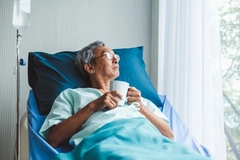Secret for Effective Use of Curcumin Unveiled

A new study from Italian researchers published in Panminerva Medica shows that Meriva, an Indena proprietary complex of curcumin with soy phosphatidylcholine, helps relieve pain and increase mobility in patients with osteoarthritis.
Jul 27 2010 --- Meriva, a patented complex of curcumin with soy phosphatidylcholine, has been shown to reduce pain and improve mobility in patients with osteoarthritis. It is the first time curcumin has shown efficacy at low and clinically realistic dosages.
A new study from Italian researchers published in Panminerva Medica shows that Meriva, an Indena proprietary complex of curcumin with soy phosphatidylcholine, helps relieve pain and increase mobility in patients with osteoarthritis. This is the first time that curcumin shows clinical efficacy at low and realistic dosages, a result due to a phospolipid formulation obtained with the Phytosome technology. This special type of complexation had previously been shown to improve the stability and absorption of curcumin also in humans.
In this registry study, patients with osteoarthritis (OA) were treated with Meriva at a dosage corresponding to 200mg curcumin/die. This dosage is much lower than those used in previous and ongoing clinical studies, that can reach 8 g/die. The results showed that Meriva is clinically effective as a complementary management tool for OA, suggesting that the increased stability and better absorption of curcumin induced by phospholipid complexation have a direct clinical translation. Findings from the study also suggest a reduced need in physical treatments and hospitalization costs for patients treated with the curcumin complex.
Commenting the results of the study Giovanni Appendino, Professor of Organic Chemistry at the University of Eastern Piedmont and Indena Scientific Advisor, said “Over 2,500 preclinical investigations have shown a potential role for curcumin in the treatment of a wide array of diseases, especially of the chronic-inflammatory type. However, the low water solubility of curcumin, its chemical instability at intestinal pH values, and its extremely poor oral bioavailability have so far hampered all attempts of clinical developments. Today, those problems have been largely overcome by phospholipid complexation offering improved stability and oral absorption in comparison with uncomplexed curcumin”.
Curcumin is also a gastroprotective agent, and might protect patients from the adverse gastric side-effects of many anti-inflammatory drugs, improving the quality of life for patients and decreasing significantly the treatment costs.
Curcumin is the yellow pigment of turmeric (Curcuma longa L.), the most important spice of the Indian cuisine, and a major ingredient of curry powders. In Asian Medicine, turmeric is used for the treatment of inflammation and joint pain. In Western countries, it is mainly employed as a food additive to color dairy products (cheese and yogurts), margarine and canned food. The dosage used in the study was only slightly higher than the dietary intake of curcumin in the Indian diet, where turmeric is mainly consumed in an oily matrix that favors its absorption.
Meriva is a patented complex of curcumin, a dietary phenolic, with soy phosphatidyl choline. The two compounds form a non-covalent adduct in a 1:2 weight ratio, and two parts of microcrystalline cellulose are then added to improve formulation, with an overall content of curcumin of 20%.
Meriva is already included as an ingredient in food supplements marketed in USA and EU and available over the counter. In this study, a finished form prepared by Thorne Research Inc. (Dover, Idaho, USA) was used (Meriva Curcumin Phytosome capsules), at the dosage of 1 g Meriva complex die (corresponding to 200 mg curcumin/die).
A total of 50 patients with x-ray confirmed OA were divided into two groups: group A) was managed using the ‘best available treatment’ as defined by patient’s GP and by the specialists; group B) was managed using the ‘best treatment’ as above in association with Meriva administered as a food supplement. Both objective and subjective end-points were evaluated: mobility was studied by walking performance (treadmill), and the inflammatory status was assessed by measurements of C-reactive protein (CRP) plasma concentration. OA signs/symptoms were evaluated by the WOMAC scores. After three months of treatment, the global WOMAC score (used to evaluate OA signs/symptoms) decreased by 58% (p < 0.05), walking distance in the treadmill test was prolonged from 76 m to 332 m (p < 0.05), and CRP levels decreased from 168 ± 18 to 11.3 ±. 4.1 mg/L in the subpopulation with high CRP. In comparison, the control group experienced only a modest improvement in these parameters (2% in the WOMAC score, from 82 m to 129 m in the treadmill test, and from 175 ± 12.3 to 112 ± 22.2 mg/L in the CRP plasma concentration), while the treatment costs (use of anti-inflammatory drugs, treatment and hospitalization) were reduced significantly in the treatment group.












